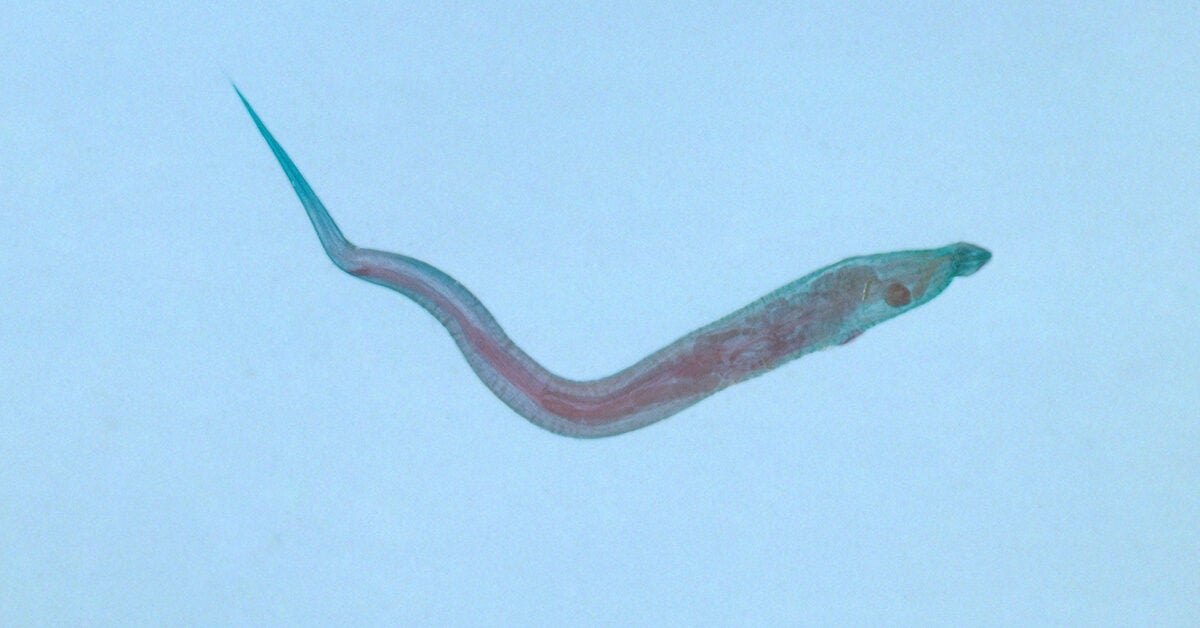
Oviposition occurs primarily while the host is resting, i.e., predominantly at night while they sleep. The time interval between ingestion of infective eggs and oviposition by the adult female pinworm is 2–6 weeks ( 15). The males die soon after copulation the gravid females, on the other hand, have an overall life span of up to 100 days, reaching the anal canal by means of active migration ( 14). After molting twice, the worms copulate and then migrate downwards to the large intestine, where they can be found in large numbers particularly in the cecum, appendix, or ascending colon. After passing through the pylorus, the pinworm larvae hatch in the small intestine. Once in the digestive system of the host organism, the external membrane of the eggs softens. Infection occurs via oral ingestion of infective eggs-the larvae contained in the eggs become infective within as little as 4–6 h following oviposition. vermicularis has a simple direct life cycle ( Figure) ( 13), which takes place in the gastrointestinal lumen. The parasite eggs are able to survive for a number of days outside the body (tenacity) ( 10– 12).Į. The first larval stage in the egg can often be well visualized. The double-layered, elongate-oval eggs ( Figure 2) are 50–60 × 25 µm in size, translucent, and asymmetrical in shape (“slice of bread” shape).


vermicularis has a thick outer protective covering (cuticle). The extensive uterine reproductive system of the fertilized female worm is often completely filled with eggs (>10 000/worm) ( 6, 7). The head section is rounded and contains a muscular esophagus and bulb ( eFigure) in females, the tail section is narrow and sharply tapered. Striking whitish-beige in color, they are typically round in shape and move with a vigorous worm-like crawling motion. The females are 9–12 mm long with a diameter of approximately 0.5 mm, while the males are shorter (3–5 mm) but visible to the naked eye. The distinguishing feature of these worms is their eponymous “thread-like” appearance ( Fig. Fossil findings confirm that their co-existence stretches back over many thousands of years ( 7– 9). vermicularis has been successfully established as a parasite in the host organism since the evolution of human hominids. The first description of the typically configured worm eggs by the Swedish natural scientist, Carl von Linné, dates back 1758 ( 6). Synonyms include “threadworm” and “seatworm.” Symptomatic pinworm infection is referred to as enterobiasis (older term: oxyuriasis) ( 5). Oxyuris) vermicularis is a human-pathogenic intestinal parasite belonging to the nematodes (Nematoda). A lack of knowledge about how infection is transmitted and can be prevented, unsuccessful attempts at treatment, as well as a relatively high recurrence/autoinfection rate can lead to resignation on the part of the patient.ĭespite a high disease incidence, there is surprisingly scant systematically proven knowledge on treatment-not to mention a German-language guideline therefore, since general practitioners, as well as infectious disease and pediatric outpatient departments, are nevertheless regularly confronted with enterobiasis, this article aims to summarize the current state of knowledge in order to ensure optimal diagnosis and treatment.Įnterobius (syn. For this reason, affected patients are often too embarrassed to seek medical advice ( 4). Although pinworm infection follows a harmless course in the majority of cases and is even asymptomatic in approximately 40% of cases ( 3), it is not uncommon for enterobiasis to be associated with considerable psychological distress for children and adults. However, there have also been isolated signs of locally clustered detection rates over the past 10 years, for instance in the greater Berlin area ( 2). A follow-up investigation conducted in 1997 found a drop in these rates to 2%, 3.4%, and 0.7%, respectively ( 1). A 1978 investigation in daycare centers in Schwerin, Germany, found pinworms in 29% of children aged 1–3 years, 64% of 4- to 7-year-olds, and 28% of teachers.

Due to its widespread prevalence in children-and occasional occurrence in adults-symptomatic pinworm infection (enterobiasis) remains a relevant problem in Germany, despite the fact that infection rates have declined since the reunification.


 0 kommentar(er)
0 kommentar(er)
